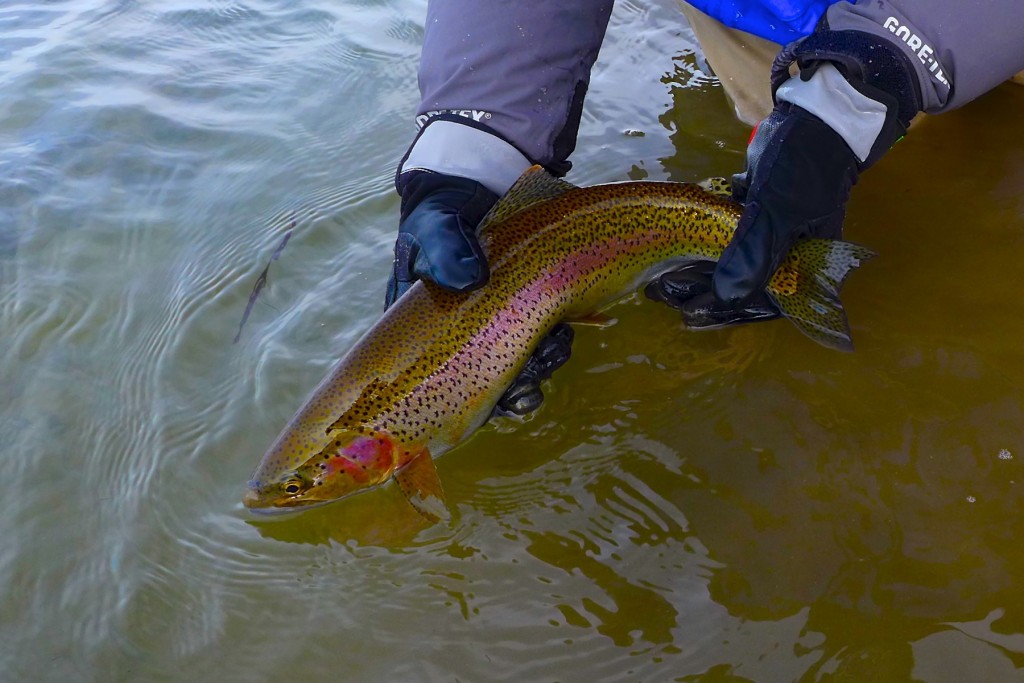The water temperature’s about 34 F. Pretty damn cold. You wouldn’t think the nymphing is hot, but it is. The fish are hot, too – surprisingly strong for that water temp.
The thing to remember is that they are not in the fastest water. Right now, you’ll find them in medium fast to slow water. But you’re water reading skills are still important. Look for drop offs and seams. Check slow water near shore. The inside corner is big.
Pink is in.
But remember: It’s not the fly that’s most important; it’s what you do with it!
Cold Water Nymphing Technique | Bob Glassen
In almost fifty years of fly fishing I’ve been asked, “What fly are you using?” a thousand times. Nobody ever asks, “How are you fishing it?” And that’s the most important thing.
So, the fish are near the bottom. They will eat, but you have to get the fly in their face.
You may get away with a “kinda-dead” drift in fast water with active bugs, but you’ll seldom hook up like that in the winter.
So, you need to do two things:
Find Fish. They are near the bottom in medium fast to slow water.
Put the Fly in Their Face. Suspend your nymphs from the indicator. Touch bottom with nymphs and then bring it up about 12 inches (or less). Adjust your indicator when the depth you’re fishing changes. If you keep striking on bottom, bring it up a little. Find the bottom and adjust every time you move! Strikes are subtle. If it twitches, hit it.


4 Comments.
First, thanks for the info about cold water nymphing. I always welcome new ideas, especially since I’m still very much a newbie.
Second, thanks to Headhunters for ALL the great info. You are my go-to place for fly-fishing info and I hope to make it to Craig sometime in the next year so I can visit your shop and fish-the-Missouri.
Third, I’ve been wondering… what DO you recommend for cold water gloves???
Thanks!
David,
KAST Steelhead gloves are what we use. Or fingerless wool with hand warmers nearby. http://www.craigflyshop.com
Another glove option to consider, either by itself or with fingerless gloves, are surgical gloves. I like the blue nitrile ones because they are pretty tough. Surgical gloves keep your hands pretty dry, keep the wind off them and you can still tie on flies, feel the line and even tippet.
Another thing — the surgical gloves are warmer than you would think. When your hands are dry and have a little protection from the wind, it makes a big difference.